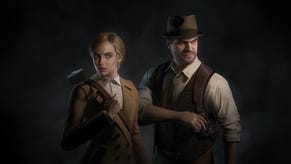War Hospital, out now, is a tug-of-war between empathy and efficiency
Worth a triage
War Hospital, out now on Steam, is about subsisting on the periphery of a war and keeping it firmly off-screen by means of adept time management. Set in 1918, it puts you in charge of a field hospital in northern France, a few minutes drive from the frontline. Here’s how all that works: casualties arrive from the trenches by ambulance or stretcher, and are carried by your medics to a clearing station, where nurses look after them before they’re seen by a doctor. Patients may be lightly or severely injured, but they will all eventually die if they’re left unattended.
You have to triage them so that the most pressing cases are seen first, guesstimating how long it’ll take them to deteriorate based on the UI’s calculatedly imprecise visual language, while also ensuring that your doctors, nurses and medics don’t work for so long that they collapse, which entails a lengthy recuperation period.
Triaging isn’t quite as simple as counting the number of bullet holes on the patient’s hospital card, though that’s the best place to start. Some may have more complicated injuries that use up more hospital supplies, and require longer operations. Others may be VIPs, whom your superiors would like you to prioritise. And all the while, more of them are arriving in a steady flow of writhing bodies on stretchers.
Any patient you accept who dies on the operating table or while in clearing takes a chunk out of your hospital morale, which ends the game when it falls to zero. But you can reduce the morale cut by denying them treatment in advance and letting them expire in the clearing station. Doing this regularly is vital, because there are generally more patients than you have time to treat, but if you do it too often, you’ll earn a reputation for being callous.
The triaging proces is the heart of a cluster of other time and resource management systems. You’ve got to ensure you have various medical supplies and food for staff and patients, whether produced onsite or delivered by train. You’ve got to upgrade your facilities, expanding your production and storage capacity while adding X-ray tents to minimise complications during operations and specialised wards for victims of gas poisoning.
And then there’s the question of what you do with patients, once they’re healed. You can send them home to boost hospital morale, or send them to HQ in exchange for permits for those vital new facilities and upgrades. But more often than not, you’ll need to send them straight back to the front, which is depicted as a slowly advancing timeline with enemy attacks colour-coded for severity. The wounded soldiers sent your way are, in short, both clients of the game’s medical management system, and flexible raw resources. You aren’t so much healing the sick, as producing the healthy.
The overall result is a dreary but demanding strategy experience that challenges you to maintain empathy for those in your care, even as the simulation forces you to think of your patients and staff as, essentially, competing time signatures that must be ruthlessly synchronised or edited out. After a couple hours’ play, I think it’s an open question as to whether that reflects the World War period, or is a product of a modern management philosophy also applicable to cosier simulators like, say, Restaurant Tycoon 2.
War Hospital’s period portrayal is meticulous – the maps are intricate studies of tumbledown houses, roads and railways – but it’s also deeply cliched, with its elegantly washed-out photography and loading screen Emile Zola quotes, which makes it easy enough to strip the presentation away and perceive the mechanics in the abstract. Speaking for myself, the only things that really ground me in the setting are the occasional screams you hear from the operating wards and clearing tents. These made me reluctant to zoom in too close – an interesting complication of the top-down perspective.










